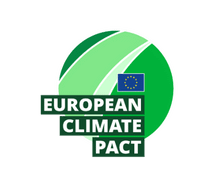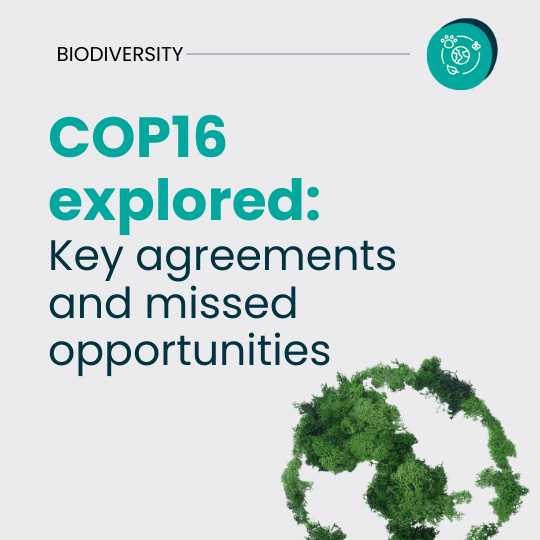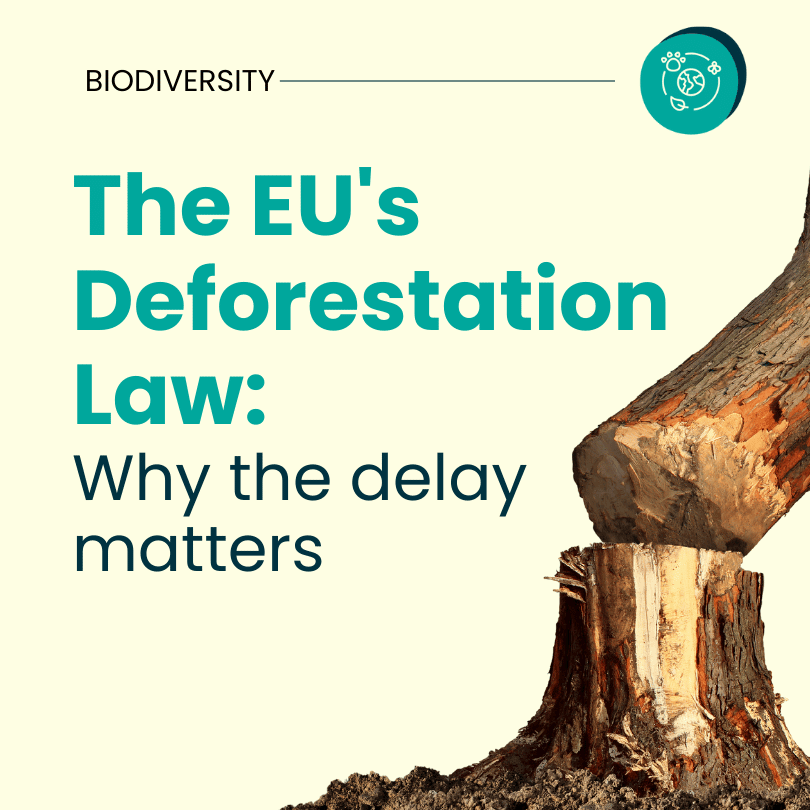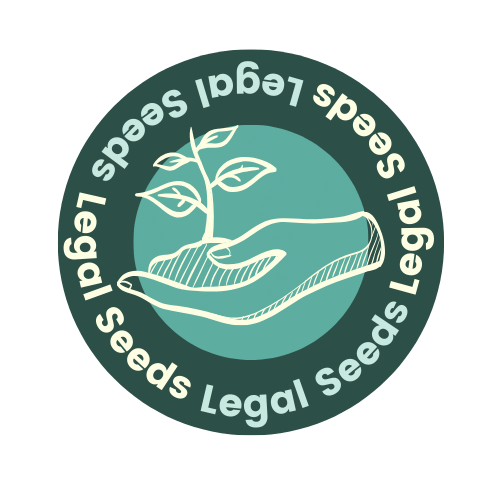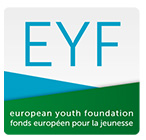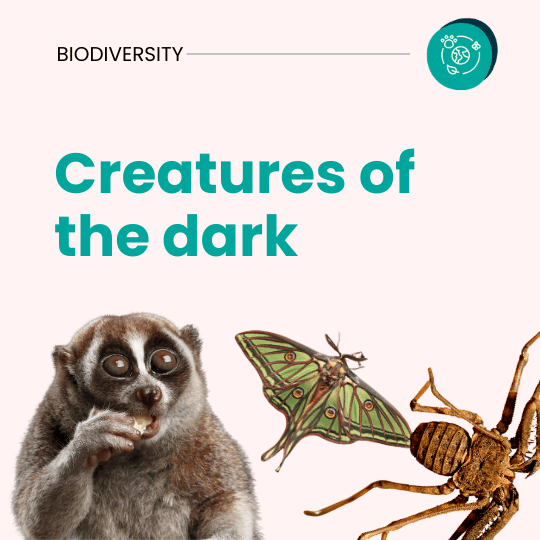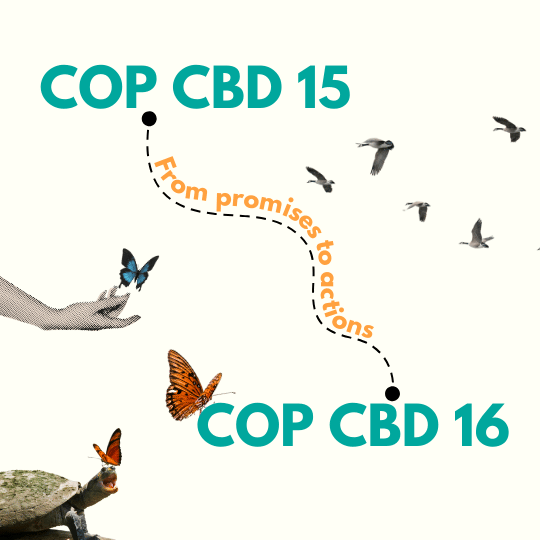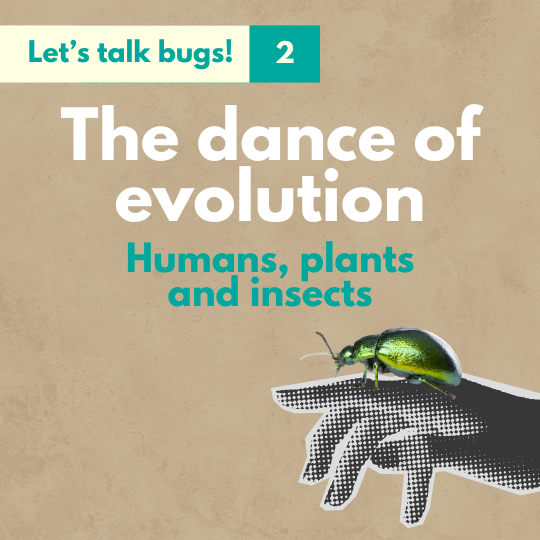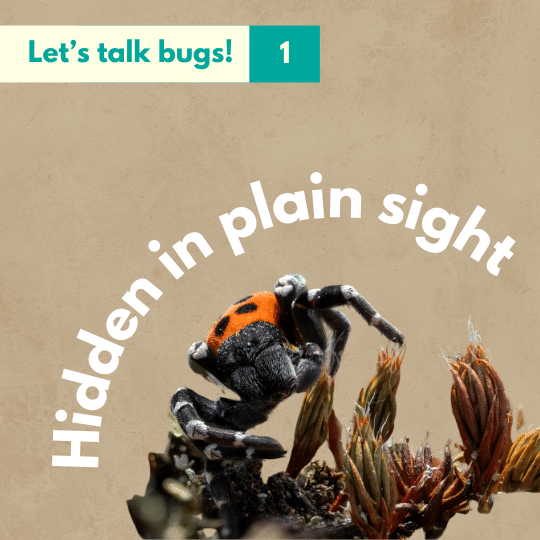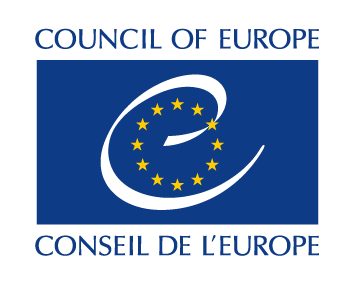Call for board members 2024/2025

5 h/ week
volunteering
remote
elected
Start 1st August 2024
Open call for the Executive Board 2024/2025
Youth and Environment Europe (YEE) is pleased to announce the open call for the Executive Board 2024/2025. The members of the board will be voted in during our Annual Meeting 2024.
The Executive Board is responsible for making all the decisions between the Annual Meetings and the implementation of the Work Plan accepted by the General Assembly, together with the Secretariat.
How to apply?
All interested candidates are invited to fill in the application form including a CV and nomination letter from any of YEE member organisations by the 15th June 2024, 23:59 CEST.
Application deadline: 15th June 2024
By assuming the position of a Board Member you will:
- Get an excellent opportunity to work in an ambitious multinational team
- Get international exposure and hands-on experience in your selected domain
- Develop your competencies and acquire a range of skills that will be beneficial for your future
- Attain concrete opportunities for your education or career development
Who are we looking for:
The position of a Board Member of YEE is voluntary and remote. All members of the Board assume responsibilities according to the position they take.
The positions are as follows:
- • Chairperson – governance and chairing of the Board,
- • Treasurer – fundraising, External Relations Officer – external partnerships and visibility,
- • Project Officer – YEE projects,
- • Communications Officer – YEE newsletter and social media,
- • Member Organisations Officer – Regional teams and membership management.
- • External Relations Officer – Partnerships
Learn more about each position in our Board Members Policy.
Call for board members 2024/2025
https://yeenet.eu/wp-content/uploads/2024/02/hiring.png 250 250 Eva Kloudová https://yeenet.eu/wp-content/uploads/2018/11/logo-yee-728x1030.png Eva Kloudová2024-06-03 13:42:302024-06-25 11:15:43Call for board members 2024/2025YEE’s Annual Meeting 2024
from 12th to 14th July 2024 in Prague, Czechia
Practical information
-
When
12th July to 14th July 2024
-
Where
Prague, Czechia
-
Fees
Fully funded for official delegates
-
How
Hybrid

This event it funded by the European Union.
Share This Event
Youth and Environment Europe would like to announce that the Annual Meeting and the General Assembly of YEE will take place on from 12th to 14th July 2024 in Prague, Czechia.
We are happy to say that it will take place in person with an option to join in remotely. Hereby, we would like to ask each YEE member organisation to appoint a delegate to represent and vote on behalf of your organisation during the General Assembly (GA).
Food, accommodation, and visa expenses or the duration of the annual meeting will be covered in full. Travel expenses will be reimbursed according to the Erasmus+ Programme Guide 2024.
How can you join?
- As a Member organisations delegate (contact your local organisation).
- Guests and YEE team (contact the YEE team).
Open calls
Become a board member
Responsibilities
- Making all the executive decisions between the Annual Meetings
- Supervising the implementation of the Work Plan
- Fulfilling their specific position's responsibilities
Become an internal auditor
Responsibilities
- Assessing the quality of YEE project implementation
- Evaluating the work of the Board and Secretariat
- Providing feedback and suggestions for improvement to the network
Have questions? Get in touch!
YEE’s Annual Meeting 2024
https://yeenet.eu/wp-content/uploads/2024/06/annual-meeting.png 1080 1080 YEE https://yeenet.eu/wp-content/uploads/2018/11/logo-yee-728x1030.png YEE2024-06-03 13:05:382024-07-23 10:16:36YEE's Annual Meeting 2024The Future of the European Green Deal
Challenges and Opportunities After the European Elections
Join us for “The Future of the European Green Deal: Challenges and Opportunities After the European Elections” – a hybrid panel discussion hosted by The Earth Society, YEE (Youth and Environment Europe), and VUB (Vrije Universiteit Brussel). The panel will be followed by a networking drink!
Why are we doing this
The European elections are around the corner and the landscape for climate action is expected to shift. What does this mean for the future of the European Green Deal?
Whether you are a policymaker, researcher, student, or simply passionate about climate action, this event is for you!
This is your chance to hear from leading experts and engage in a critical discussion about:
- The impact of the recent elections on the Green Deal's trajectory.
- Key challenges and opportunities facing the green transition.
- Strategies for ensuring a sustainable and equitable future for Europe.
Meet the speakers

Flora Dicke
Researcher at Ecologic Institute
Flora Dicke works as a Researcher at Ecologic Institute in Berlin. Her main areas of research are German and EU climate mitigation and adaption policy, as well as topics connected to political economy and socio-economics. Her current activities center around the EU-funded Horizon 2020 project “Transformative Policies for a Climate-Neutral European Union (4I-TRACTION)”, where she works on policy instruments with transformative potential and supports the synthesis of project results and their dissemination. Additionally, she is involved in the socio-economic assessment of adaptation measures and assesses international taxation options for the benefit of climate finance.
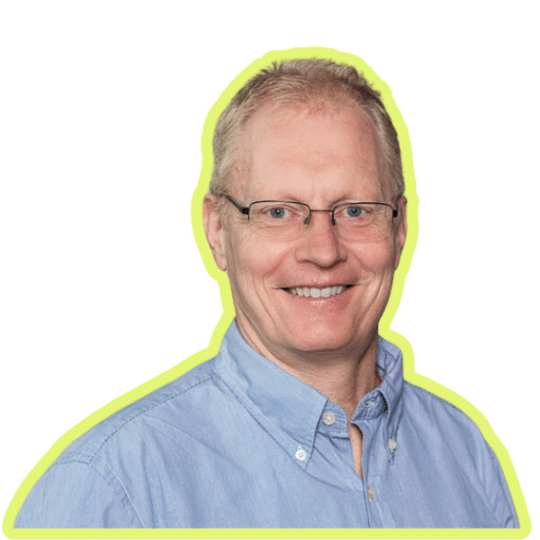
Sebastian Oberthür
Professor and Co-director
Prof. Dr. Sebastian Oberthür is the Co-Director of the Research Centre for Environment, Economy and Energy, and Professor for Environment and Sustainable Development at the Brussels School of Governance (BSoG). He is also Professor of Environmental Policy and Law at the Centre for Climate Change, Energy and Environmental Law at the University of Eastern Finland. He has extensive expertise on European and international environmental governance, policy and law, including climate governance, with an emphasis on institutional issues and perspectives.
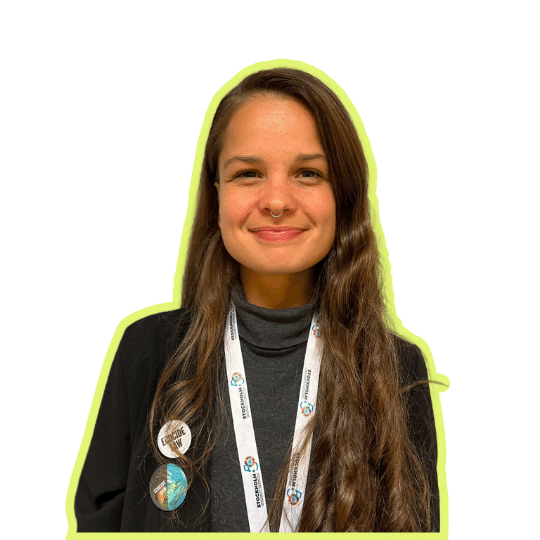
Stephanny Ulivieri
Project Lead at YEE

Andrea Casamenti
Just Transition Policy Coordinator at Solidar Foundation
Andrea Casamenti is the Policy Coordinator for Just Transition at SOLIDAR, a network of over 50 civil society organisations across Europe representing millions of people committed to social justice and solidarity. Andrea leads SOLIDAR’s policy and advocacy work on a socially just transition to sustainable development in Europe, including the management of the European Alliance for a Just Transition, a coalition bringing together more than 40 European stakeholders with a common vision for a just transition in Europe.
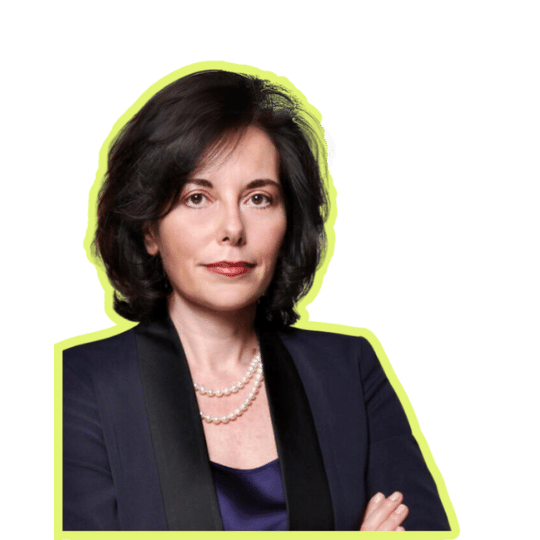
Arvea Marieni
Partner and board member at Brainscapita
Arvea is a partner and board member of the management consulting firm Brainscapital, a shareholder of the French engineering firm BEAM CUBE, where she co-leads the Ecological Transition Solutions Division, and a special commentator on current affairs for CGTN. As a strategic advisor, climate policy expert and innovation manager, she specialises in EU-China environmental cooperation and serves as an expert for the European Commission, including Horizon evaluations, and as a consultant to the UNFCCC. In 2024, she was invited to join the Steering Committee of the Master in Agricultural and Food Economics at the Università CaSolica del Sacro Cuore, Cremona Campus.
Have questions? Get in touch!
Other upcoming events
The Future of the European Green Deal
https://yeenet.eu/wp-content/uploads/2024/06/green-deal.png 1080 1080 Eva Kloudová https://yeenet.eu/wp-content/uploads/2018/11/logo-yee-728x1030.png Eva Kloudová2024-05-31 13:19:422024-06-25 11:16:19The Future of the European Green Deal
Recommendations to the EU Commission
YEE drafted these recommendations to the EU Commission on how to address the gaps in the exercise of Aarhus rights with regards to European youth. More specifically, the recommendations focus on the absence of youth participation in NECPs processes and its concerning implications, calling the Commission to call Member States to fill this gap as soon as possible and with adequate measures.
These recommendations are complemented by YEE’s country-specific reports on youth participation in the NECP processes in Bulgaria, Cyprus, Greece and Italy.
What is included in the position statement
The Commission should monitor the effective exercise of these rights among Member States, particularly amidst the observed shrinking of civic space, especially among young people and youth organisations. It is imperative to safeguard democratic participation rights among the youth population for more ambitious and effective climate action.
The poor exercise of Aarhus rights among European youth is evident in their non-participation in MCED and consultation processes concerning NECPs revision. Member States’ and EU’s failure to involve younger generations and their representative organisations undermines the rights of those who will bear the consequences of NECPs outcomes well into the future.
“There is a need to provide opportunities to engage in these processes that are specifically designed in such a way that takes into account the needs, opportunities and resources that young people have to engage in the deliberation.”
Learn about other campaigns that YEE supports

As European youth, we hold all relevant decision-makers accountable for this grave backsliding in European conservation law. We call for the return

This document is an invitation to rethink and act, setting ambitious goals for the textile sector that align with biodiversity and climate

As European youth, we acknowledge our region’s historic responsibility for global emissions and call for urgent, just climate action. In solidarity with

As young people in Europe, we expect European countries at COP 16 of the Convention on Biological Diversity (CBD) to prioritise bold,

Put biodiversity on a path to recovery beyond the next funding period to build a safer, healthier future for people and nature.

Youth and Environment Europe and Global Youth Biodiversity Network (GYBN) Europe Advocate for a Complete Ban on Bottom Trawling in Marine Protected
More To Explore
Youth Participation in National Energy and Climate Plans
https://yeenet.eu/wp-content/uploads/2024/02/position.png 250 250 Eva Kloudová https://yeenet.eu/wp-content/uploads/2018/11/logo-yee-728x1030.png Eva Kloudová2024-05-30 12:27:042024-05-30 12:50:31Youth Participation in National Energy and Climate PlansImpacts of the European Climate Lawsuits | Webinar
Unpacking the recent ECtHR decisions on climate cases with Victorine Nagels and Theresa Amor-Juergenssen.
Why are we doing this
The European Court of Human Rights (ECtHR) recently delivered decisions on three different climate change-related cases. These were all lawsuits brought forward by citizens across Europe, who argued that states have not done enough to mitigate climate change and to protect their citizens.
By immersing ourselves in discussions on participation, human rights, and environmental protection, we aim to ensure that the voices of young people are integral in shaping policy recommendations, as well as to create a platform where your insights and contributions can drive tangible change, fostering a global community dedicated to environmental advocacy.
In this webinar, one month after the historic decisions, we will unpack the results of the three different climate lawsuits brought forward to the ECtHR:
- KlimaSeniorinnen v Switzerland
- Carême v France
- Duarte Agostino and Others v Portugal and 32 Other States
Who will be speaking
Have questions? Get in touch!
Other upcoming events
Impacts of the European Climate Lawsuits | Webinar
https://yeenet.eu/wp-content/uploads/2024/05/IMPACTS-OF-EUROPEAN-CLIMATE-LAWSUITS.png 540 540 YEE https://yeenet.eu/wp-content/uploads/2018/11/logo-yee-728x1030.png YEE2024-05-03 13:13:052024-05-28 15:52:42Impacts of the European Climate Lawsuits | Webinar
Inside the European Parliament: Country Breakdown of Major Political Groups
Share
Good to know
During the elections, you are going to vote for a national party and usually, they are also going to be part of one of the major European groups with representatives from different countries.
What is the European Parliament
The European Parliament is composed of Members of the European Parliament (MEPs) who are organised into several political groups, each representing a spectrum of ideologies. These groups are not based on nationality but on political affiliation.
Here’s a brief overview of the major political groups:
- EPP – Group of the European People’s Party (Christian Democrats)
- S&D – Group of the Progressive Alliance of Socialists and Democrats
- Renew Europe – Renew Europe Group
- Greens/EFA – Group of the Greens/European Free Alliance
- ID – Identity and Democracy Group
- ECR – European Conservatives and Reformists Group
- The Left – Confederal Group of the European United Left/Nordic Green Left
- NI – Non-Inscrits” (Non-Attached Members)
Overview of the major groups in the European Parliament by country
Check out the national parties in the political groups of the European Parliament!
How to do that?
- Click on the country of your interest
- Click on the a political group
- Discover the national parties*
* If you hover on the name, you can see their website to get more info
Check out the national parties in the political groups of the European Parliament!
How to do that?
- Click on the country of your interest
- Click on the a political group
- Discover the national parties*
* If you hover on the name, you can see their website to get more info
Inside the European Parliament: Country Breakdown of Major Political Groups
https://yeenet.eu/wp-content/uploads/2024/04/EU-Elections9.png 500 500 YEE https://yeenet.eu/wp-content/uploads/2018/11/logo-yee-728x1030.png YEE2024-04-09 12:29:082024-05-15 14:58:16Inside the European Parliament: Country Breakdown of Major Political Groups
Inside the European Parliament: A Closer Look at the Political Groups Shaping EU Legislation
Share
Good to know
During the elections, you are going to vote for your national party and usually, they are also going to be part of one of the major European groups with representatives from different countries.
Learn more about your national parties and their current position in the European parliament!
What is the European Parliament
The European Parliament (EP) is one of the legislative bodies of the European Union (EU) and one of its seven institutions. It works alongside the Council of the European Union (also known as the Council) to adopt European legislation, following proposals made by the European Commission.
The European Parliament is composed of Members of the European Parliament (MEPs) who are organized into several political groups, each representing a spectrum of ideologies. These groups are not based on nationality but on political affiliation.
Here’s a brief overview of the major political groups:
- EPP – Group of the European People’s Party (Christian Democrats)
- S&D – Group of the Progressive Alliance of Socialists and Democrats
- Renew Europe – Renew Europe Group
- Greens/EFA – Group of the Greens/European Free Alliance
- ID – Identity and Democracy Group
- ECR – European Conservatives and Reformists Group
- The Left – Confederal Group of the European United Left/Nordic Green Left
- NI – Non-Inscrits” (Non-Attached Members)
Each group has its own set of core principles and policies, and they work together to influence legislation and policy within the European Union.
Overview of the major political groups
The Group of the European People’s Party (EPP) is a political group in the European Parliament composed of center-right and Christian-democratic parties from across the EU. It is one of the biggest and most influential groups in the Parliament, with 182 seats as of 2019 and Manfred Welbeg as its president. Hence, it holds the presidency of the European Parliament.
The 44 group’s members come from various European countries and represent a diverse range of political ideologies within the center-right spectrum. The EPP promotes European integration and cooperation while prioritizing issues such as economic growth, security, and stability.
Overall ideology
The EPP advocates for conservative and center-right policies, focusing on economic liberalism, social conservatism, a strong European Union, and sustainable development as their main values.
What are their environmental convictions?
The official EPP’s 2019 environmental vision called for a 50% reduction in emissions by 2030 and carbon neutrality by 2050, prioritizing ambitious climate targets. To encourage the reduction of emissions, they backed carbon pricing, emissions trading, and sustainable economic policies. Their main goals included developing a circular economy, sustainable agriculture, and the shift to clean energy. Global leadership in sustainability, social considerations, and green innovation were also highlighted. In general, the EPP aimed to strike a balance between economic prosperity and climate action, placing a strong emphasis on social responsibility, innovation, and collaboration when addressing environmental issues.
The Group of the Progressive Alliance of Socialists and Democrats (S&D) represents the center-left. As a significant faction in the Parliament, it advocates for policies that focus on social justice, equality, and sustainability. With a focus on issues like workers’ rights, social protection, environmental sustainability, and inequality, the S&D group aims to promote a socially conscious Europe. Thus, social democratic, socialist, environmental, and labor parties from throughout the European Union are among their values. With Iratxe García Pérez as their president, the group’s members come from diverse national backgrounds and share a common goal of advancing policies to build a more equitable society.
Overall ideology
The S&D seeks to balance economic growth with social welfare, advocating for policies that protect vulnerable groups in society.
What are their environmental convictions?
S&D advocates for immediate action to combat climate change and envisions comprehensive environmental values centered on the Green Deal. Sustainable policies were highlighted, such as investments in clean energy, support for agriculture, and restoration of the environment. Prioritising a just transition, S&D struck a balance between social equity, environmental protection, and job preservation. They supported laws that set aggressive goals for reducing emissions, such as the European Climate Law and the Nature Restoration Law. In addition, they put forth a zero-pollution plan and attempted to harmonise fisheries and agriculture policies with climate goals. In order to achieve a sustainable and socially just future, they placed a strong emphasis on social cohesion and worked to enact environmental regulations in conjunction with the European Pillar of Social Rights.
Renew Europe supports policies that emphasize individual freedoms, human rights, democracy, and the rule of law, alongside environmental sustainability and digital innovation. The group advocates for an open economy with fair competition, aiming for a balanced approach that fosters economic growth while ensuring social justice and protection for all citizens. Within the Parliament, it promotes a centrist agenda that aims to bridge the gap between the left and right. Renew Europe’s influence in discussions on EU governance includes areas such as the digital single market and climate change, advocating for reforms and regulation.
Overall ideology
The Renew Europe Group is a political group in the European Parliament representing a coalition of liberal, centrist, and pro-European parties from across the EU.
What are their environmental convictions?
Renew Europe’s environmental agenda emphasizes fulfilling the objectives of the Paris Agreement and promoting the shift to a society that is climate neutral by 2050. They underlined that in order to mainstream environmental and climate objectives and expedite the ecological transition, coherence across all EU policies is essential. Innovation, environmentally friendly sectors, and international climate leadership were given top priority by Renew Europe. They demanded bold legislation to increase emission reduction targets, such as an updated European Green Deal and an efficient Climate Law. They also stressed the need to preserve the environment, move toward a circular economy, and guarantee the quality of the air and water. Renew Europe promoted innovation, sustainable production, and renewable energy while attempting to incorporate environmental goals into trade, agriculture, and fisheries policies.
The Group of the Greens/European Free Alliance (Greens/EFA) is composed of green, regionalist, and minority parties from across the European Union. This group, with its 74 seats in 2019, is known for advocating for environmental protection, climate action, and sustainability, pushing for policies to combat climate change and preserve biodiversity. The Greens/EFA prioritise stances on social issues, including human rights, gender equality, and social justice, reflecting a commitment to creating a more equitable and inclusive society, while also supporting a transition to renewable energy, sustainable transport, and a circular economy. The group emphasizes transparency, democracy, and civil liberties within the EU, advocating for citizen participation in European decision-making. Through its work in the European Parliament, the Greens/EFA seeks to influence EU policy and legislation towards sustainable and socially responsible directions.
Overall ideology
/
What are their environmental convictions?
The Group’s environmental agenda aims to limit global warming to below 2 degrees. They advocate for increased renewable energy targets, simplifying administrative processes for renewable projects, and promoting electric vehicles while opposing liquefied natural gas in transport. They also call for the end of free emissions allowances, integrating aviation and shipping emissions into the Emissions Trading System, and implementing a Carbon Border Adjustment Mechanism for imported goods. Additionally, they focus on addressing energy and transport poverty through the Social Climate Fund, supporting emissions reduction targets in forestry and land use, and advocating for stringent ecodesign requirements for vehicles, along with a ban on new petrol and diesel cars within the next decade.
Established in 2009, the ECR was founded on the principles of Eurorealism, advocating for EU reform, decentralization, and the respect of national sovereignty over deeper European integration. With its 62 seats, the group emphasizes free market economics, individual liberty, and reducing the power of the EU institutions in favor of giving more control back to member states. Accordingly, the ECR has advocated for the preservation of traditional values, stricter immigration laws, and a strong stance on law and order. The group actively engages in the legislative process to influence policies that align with its vision of a more flexible and decentralized European Union, despite its eurosceptic position.
Overall ideology
The European Conservatives and Reformists Group represents a political grouping of conservative, eurosceptic, and right-wing parties from across the European Union.
What are their environmental convictions?
The European Conservatives and Reformists prioritise initiatives like the EU’s Emission Trading Scheme to reduce greenhouse gas emissions while safeguarding European industries. ECR-led efforts focus on improving air quality through cross-border collaboration and setting stringent emissions ceilings. They address the illegal wildlife trade by outlining challenges and proposing solutions. In fisheries, they advocate for sustainable practices balancing environmental protection, consumer demand, and the livelihoods of fishermen. ECR stresses the importance of science and technology in farming and fishing for sustainable resource management. They aim to protect the environment while ensuring economic prosperity and food security.
The Identity and Democracy (ID) Group in the European Parliament is composed of nationalist and eurosceptic parties from the European Union (EU). Established in June 2019, following the Europe of Nations and Freedom (ENF) group, ID consists of parties that focus on national sovereignty and express concerns about the EU’s approach to federalism. ID advocates for a model where EU member states cooperate on an intergovernmental basis and seeks a reevaluation of powers between the EU and its member states.
Overall ideology
ID represents a perspective in the European Parliament that prioritizes the interests and sovereignty of individual nations, aiming for a more decentralized EU structure.
What are their environmental convictions?
On their website, they remain silent.
Established in 1995, the group focuses on reforms in the EU related to social justice, workers’ rights, environmental sustainability, and wealth redistribution. GUE/NGL emphasizes peace, democracy, solidarity, sustainable development, and a transition towards renewable energy. With 41 seats in the Parliament, GUE/NGL participates in policy discussions, aiming to influence EU policies in the direction of social, economic, and environmental considerations.
Overall ideology
The Left group consists of left-wing, socialist, communist, and anti-capitalist parties from the European Union.
What are their environmental convictions?
The Left emphasises environmental justice, advocating for nature conservation, protection of biodiversity, and strict regulation of toxic chemicals. They prioritise animal rights and welfare alongside sustainable agricultural and fisheries policies, emphasizing support for small communities. They scrutinise trade agreements like the EU-Chile AFA; they highlight concerns over environmental degradation, indigenous rights, and corporate interests. The Left currently calls for trade policies aligned with fairness, solidarity, and ecological integrity, rejecting deals favoring corporate profits over sustainability. They also focus on legislative efforts like the Nature Restoration Law, pushing for strong measures to restore ecosystems. They also address issues such as GMO authorisation and food price crises. They emphasize safety assessments, consumer choice, and fair pricing, advocating for policies benefiting both people and the planet.
Independent MEPs in the European Parliament, often referred to as non-attached members, are those who do not belong to any of the recognised political groups. They may choose to be independent for various reasons, such as differences in ideology or political strategy.
Inside the European Parliament: A Closer Look at the Political Groups Shaping EU Legislation
https://yeenet.eu/wp-content/uploads/2024/03/EU-Elections6.png 500 500 YEE https://yeenet.eu/wp-content/uploads/2018/11/logo-yee-728x1030.png YEE2024-03-27 17:25:572024-05-15 14:51:23Inside the European Parliament: A Closer Look at the Political Groups Shaping EU LegislationDealing with Eco-Anxiety | Training of Trainers
We are looking for 20 participants who are interested in increasing their capacities to work on dealing with eco-anxiety in their organisation and environmental activism.
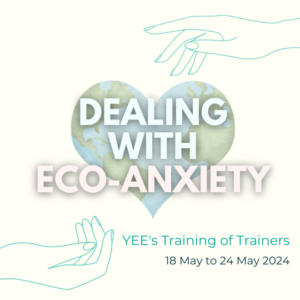
Why are we doing this
We’re embarking on this journey to empower youth workers to deal with eco-anxiety and focus on the crucial issue of the interrelation between mental health and climate change. Eco-anxiety especially affects young people, who worry about not being able to live in a clean, healthy and sustainable future. Many times this hinders their capacity to be involved in advocacy efforts, as the fear overwhelms them and results in isolation from their community.
Through non-formal education methods, we will equip the participants with knowledge on eco-anxiety and mental health impacts of climate change, enabling them to take meaningful action on these issues in their own communities. We will create a platform for discussions, knowledge-sharing, and active participation, empowering participants to collectively learn about this important topic.
This study session is for you if:
- You are based in Greece, Italy, Armenia, Czechia, Norway, Sweden, Georgia, Serbia.
- You are between the ages of 18 - 35 at the time of the event.
- You are already engaged in environmental or/and youth work in your local community.
- You have experienced challenging emotions when you think about climate change and the future.
- You are searching for a safe space to share your experiences regarding the climate crisis and the way it affects your emotions.
- You are willing to learn and connect with others on the topic of eco-anxiety.
At the training, you will:
- Deepen your knowledge and understanding of the interrelation between mental health and climate change.
- Learn about what eco-anxiety is and why it is important to address it in environmental activism.
- Gain a comprehensive understanding of training methodologies and non-formal education techniques on the topic of eco-anxiety among youth.
- Learn and develop the necessary skills and foundational knowledge of eco-anxiety in order to include it in other youth training and help as many peers as possible.
- Have the chance to gain expertise on the topic, and participate in a workshop in July with our Member Organisations as a trainer.
Have questions? Get in touch!
Other upcoming events
Dealing with Eco-Anxiety | Training of Trainers
https://yeenet.eu/wp-content/uploads/2024/03/Eco-anxiety-participant-call1.png 540 540 YEE https://yeenet.eu/wp-content/uploads/2018/11/logo-yee-728x1030.png YEE2024-03-26 16:30:112024-06-27 16:32:32Dealing with Eco-Anxiety | Training of TrainersDive into action with UK Youth4Nature | Members’ Spotlight
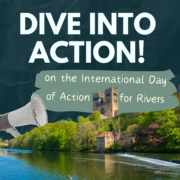
Written by

Stina Joanna Gremme

Hanna Træland Rostøl
Contents
About UKY4N
UK Youth 4 Nature (UKY4N) is the leading UK youth movement calling for urgent action on the nature crisis, and they have been cherished members of YEE since 2022. UKY4N’s mission is to mobilise and empower young people to advocate for decisive action on biodiversity in the UK, emphasising the importance of protecting and restoring nature and wildlife to address the consequences and issues of climate change. March 14th marks the International Day of Action for Rivers, and we find this the perfect occasion to put the spotlight on UKY4N and its creative river projects.
Started in 2019 as a simple Whatsapp group with the mission of bringing nature into stronger focus within political discussions, UKY4N has rapidly evolved into an active organisation with a solid volunteer base all across the UK. The organisation has strategically focused its campaigning efforts on nature rather than climate issues and has today successfully positioned itself as a prominent advocate for biodiversity. We have met with co-director Ellen Bradley, to hear more about UKY4N’s creative campaigning and imaginative projects on rivers, hoping to inspire others to take action on this important topic!
Check out UKY4N
How can you help freshwater?
-
Support nature-friendly farmers, where possible buy organic, local food.
-
Banish pesticides and herbicides from your garden!
-
Celebrate freshwater ecosystems and raise awareness of the threats, share a photo on social media, tag UKY4N and use the hashtag #NotSoFreshwater
-
Research and learn more about the state of freshwater in the UK, sign up for the UKY4Ns newsletter to keep up to date with our campaign.
-
Join the team! UKY4N is always looking for new members to help fight for nature. Email UKY4N at ukyouthfornature@gmail.com to find out more.
Share this article
Making waves for freshwater conservation
Freshwater ecosystems are the lifeblood of our planet. In the UK, around 3% of land is covered by freshwater and with an intricate network of 200,000 km of streams and rivers the freshwater ecosystems in the UK are of international importance. Thousands of lakes, ponds and ditches provide homes for diverse wildlife species, ranging from dragonflies to water voles. And yet, no rivers in England, Wales or Northern Ireland are considered to be in high ecological health, and in Scotland, as much as 92% of rivers do not meet these standards either.
Recently, freshwater systems gained more media focus on regulating sewage and plastic pollution, advancing freshwater protection. However, agricultural pollution, affecting 40% of all freshwater bodies in England, remains overlooked. In addition to that, targets for cleaning up waterways, such as the goal set for 2027, have been pushed back to 2063, giving the protection of freshwater systems in the UK an urgency that cannot be ignored.
With the campaign Not so Freshwater, UKY4N launched an awareness campaign giving agricultural pollution a much-needed spotlight. The goal is to cut the use of pesticides in half by 2023 as well as restore field margins and riverside ecosystems to reduce field run-off. Ellen emphasises creative campaigning to facilitate positive change, celebrating sustainable farmers and advocating for political action.
On the 23rd of May 2023, UKY4N was able to host a successful event, summoning a variety of politicians and NGOs. The Chemical Cocktail Bar was one of the highlights of the event, which received a big positive response and even more importantly, political attention. The concept behind the Chemical Cocktail Bar is simple, creative and yet effective. Cocktails, named after UK rivers like the Mersey and Thames, the bar creatively highlighted freshwater pollution. Presented as beautifully designed cocktail recipes, these cards added a lively touch with real added proof of the urgency of freshwater pollution, proving that campaigning for political change does not have to be boring or dry.
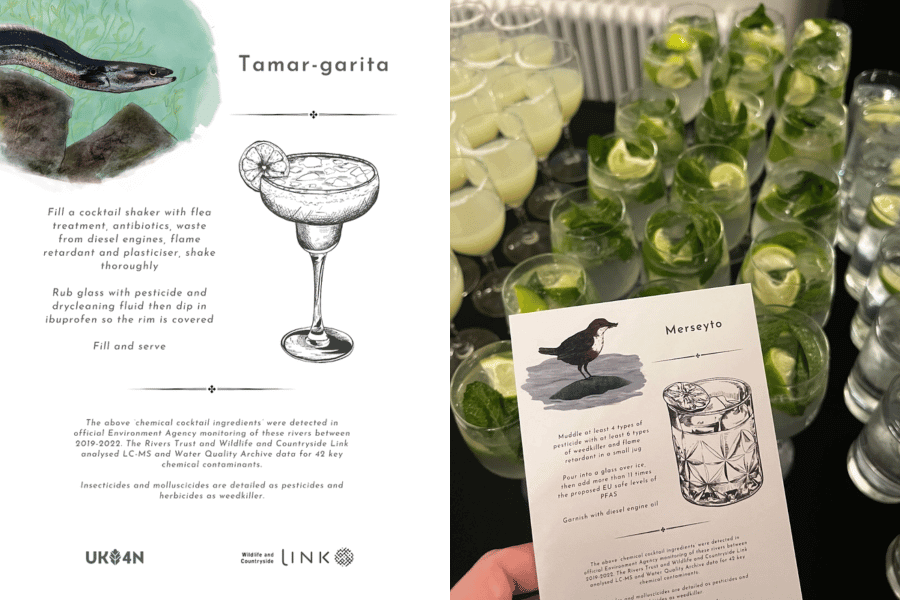
The event successfully brought together young people and politicians in a positive atmosphere, fostering constructive discussions on environmental challenges, as Ellen tells us. UKY4N maintained a balance of fun and passion, ensuring engagement while addressing urgent issues facing our natural world.
UKY4N offers practical guidance for individuals to make a difference in preserving freshwater systems, including a five-step guide for reducing pollution. Additionally, they provide a template for a letter to your regional Member of Parliament to advocate for improved chemical standards and freshwater regulation. Later this year, UKY4N will host The Senedd, an event in Wales, allowing young people to engage with Welsh politicians on nature and freshwater issues.
With its campaign Not So Freshwater and a creative, positive and fun approach UKY4N inspires us to get involved in the movement for cleaner waterways and a more sustainable future. Let yourself be inspired too!
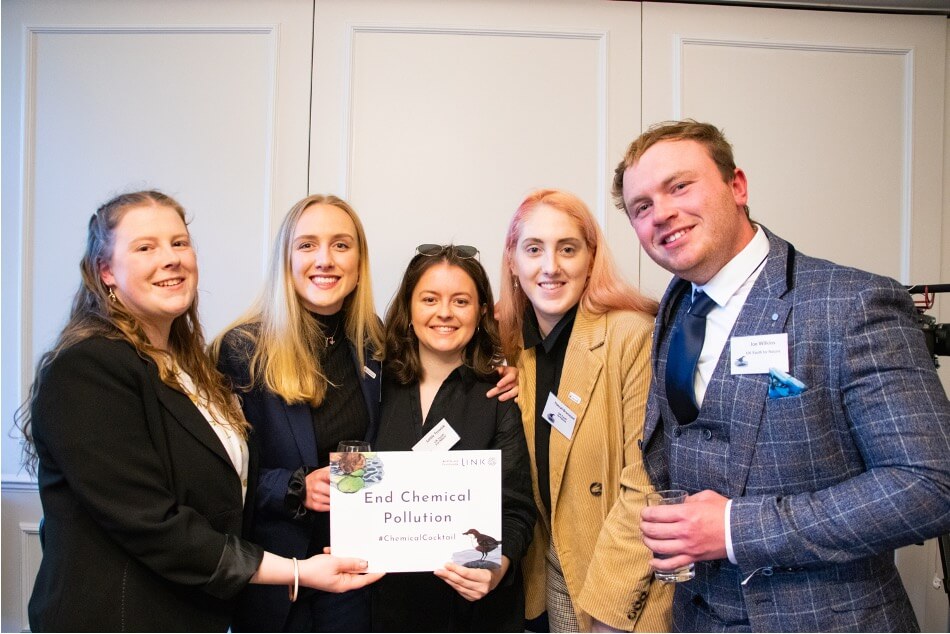
Crafting change with creative campaigning
The fun and creative methods used in the Not So Freshwater project were not a one-off, but rather lie at the very heart of UKY4N’s approach to advocating for nature. Creative campaigning entails using creative and imaginative methods and employs artistic, cultural and interactive strategies to make an impact. Ellen tells us that the main goal of this approach is to get young people excited about an issue and encourage them to make a positive contribution, even if they are not experts on issues such as the environment, sustainability or politics. That way, different people can contribute in different ways, and that makes it more diverse and even more impactful!
Another example of UKY4N’s bold creative campaigning was in their project Nature Loss: Lines in the Sand. On March 23, 2022, a 50-metre drawing depicting biodiversity in Britain was created on Scarborough Beach, featuring four biologically significant species that are declining. This symbolic act aimed to address the alarming depletion of nature in the UK, urging authorities to prioritise conservation efforts. Their creative ways received public recognition and an international audience, and if you look at the pictures of this impactful mural it is easy to understand why!
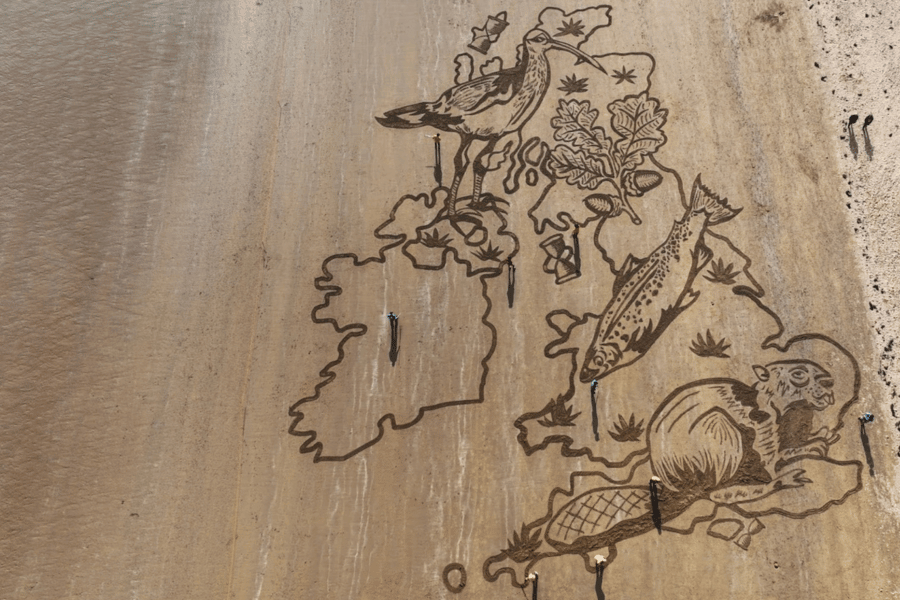
UKY4N also regularly hosts workshops to introduce young people to creative campaigning, the next one to be held in Brighton on the 23rd of March 2024.
In addition, UKY4N is currently dedicating their time to work relating to the general elections coming up in the UK this year. With the voting turnout among people in the age between 18 to 24-years in the UK in 2019 reaching 47% (compared to over 74% in the group of over 65-year olds), getting young people more enthusiastic and interested in the election is a crucial issue. As Ellen shares with us, only 50% of young people in the UK think they learn sufficiently about politics in school, so another focus of UKY4N lies on knowledge-sharing and capacity-building on the voting system. In order to be able to navigate the different and sometimes confusing party manifestos, UKY4N explains each programme from relevant political parties for everyone to understand. The main reason for that is to underline the importance of casting your vote to support certain policies and causes, as they so aptly put it on their website, “[n]ature cannot vote in elections. But many of us can!” With important elections coming up across Europe this year, not to mention the European Parliament elections, this is something many of us can keep in mind!
And with that being said, it is easy to see the problems that unite us. UKY4N is tackling the problems of the depletion of nature in the UK, but we are seeing similar problems worldwide. Although freshwater ecosystems are so important to nature and human well-being, they are also the most threatened in the world. Since 1970 freshwater species have experienced an 83% decline – twice the rate experienced within terrestrial or marine sources. Let us therefore stand united on this International Day of Action for Rivers, and reflect on the importance each and every one of our actions plays in the protection of our water systems!
More about Biodiversity
Dive into action with UK Youth4Nature | Members’ Spotlight
https://yeenet.eu/wp-content/uploads/2024/03/UKY4N-river-day-post2.png 540 540 Eva Kloudová https://yeenet.eu/wp-content/uploads/2018/11/logo-yee-728x1030.png Eva Kloudová2024-03-14 14:28:492024-03-18 12:33:59Dive into action with UK Youth4Nature | Members' SpotlightRight to Healthy Environment | Study session
We are looking for organisations and youth activists interested in increasing their capacities to work on the access to environmental rights of young people
Why are we doing this
We’re embarking on this journey to amplify the youth perspective and influence within the Council of Europe while focusing on the crucial issue of the Right to a Healthy Environment recommendation.
By immersing ourselves in discussions on participation, human rights, and environmental protection, we aim to ensure that the voices of young people are integral in shaping policy recommendations, as well as to create a platform where your insights and contributions can drive tangible change, fostering a global community dedicated to environmental advocacy.
This study session is for you if:
- You and your sending organisation are based in one of the Council of Europe countries.
- You are between the ages of 18 - 35 at the time of the event.
- You have background in and are already actively engaged in environmental & human rights activism and youth work.
At the study session, you will:
- Deepen your knowledge and understanding of young people in the sphere of environmental rights and map ways of addressing environmental rights challenges in different realities.
- Be introduced to the CM/REC (2022)20 Recommendation (in relation to human rights and the protection of the environment) by reflecting on the nature, content and implications of the right to a clean, healthy and sustainable environment.
- Map what is already being done, what needs to be improved, what needs to be started in relation to Recommendation and the different current realities.
- Develop your skills and knowledge in mobilising youth for the recognition of the right to a clean, healthy and sustainable environment through advocacy, educational and policy frameworks.
- Work to create tools for young people and civil societies to understand and foster the recognition of the right to a clean, healthy and sustainable environment as a human right.
Have questions? Get in touch!
Other upcoming events
Right to Healthy Environment | Study session
https://yeenet.eu/wp-content/uploads/2024/03/Copy-of-YEEs-Summer-Camp-on-ENERGY-POLICY-ENVIRONMENTAL-LAW.png 675 675 YEE https://yeenet.eu/wp-content/uploads/2018/11/logo-yee-728x1030.png YEE2024-03-12 12:35:262024-05-28 15:54:01Right to Healthy Environment | Study sessionOur mission
 YEE aims to unite environmental youth non-profit organisations in Europe in order to enhance international cooperation, increase knowledge about the climate crisis, raise awareness of environmental problems and to strengthen participation of youth in environmental decision-making.
YEE aims to unite environmental youth non-profit organisations in Europe in order to enhance international cooperation, increase knowledge about the climate crisis, raise awareness of environmental problems and to strengthen participation of youth in environmental decision-making.
Get in touch
Vinohradská 2165/48
120 00 Praha 2 – Vinohrady
Czech Republic
E-mail: yee@yeenet.eu


Financially supported by the European Youth Foundation of the Council of Europe. The views expressed do not necessarily reflect the official position of the Council of Europe






